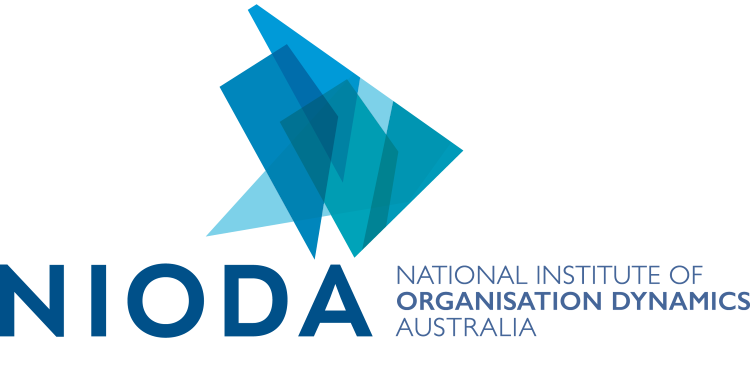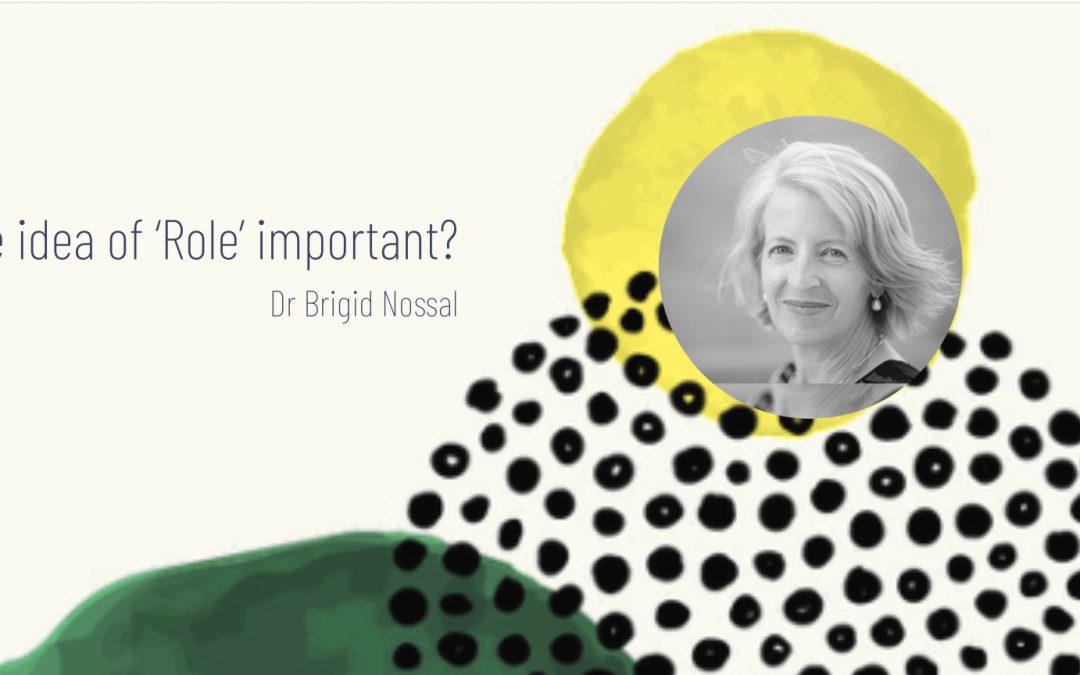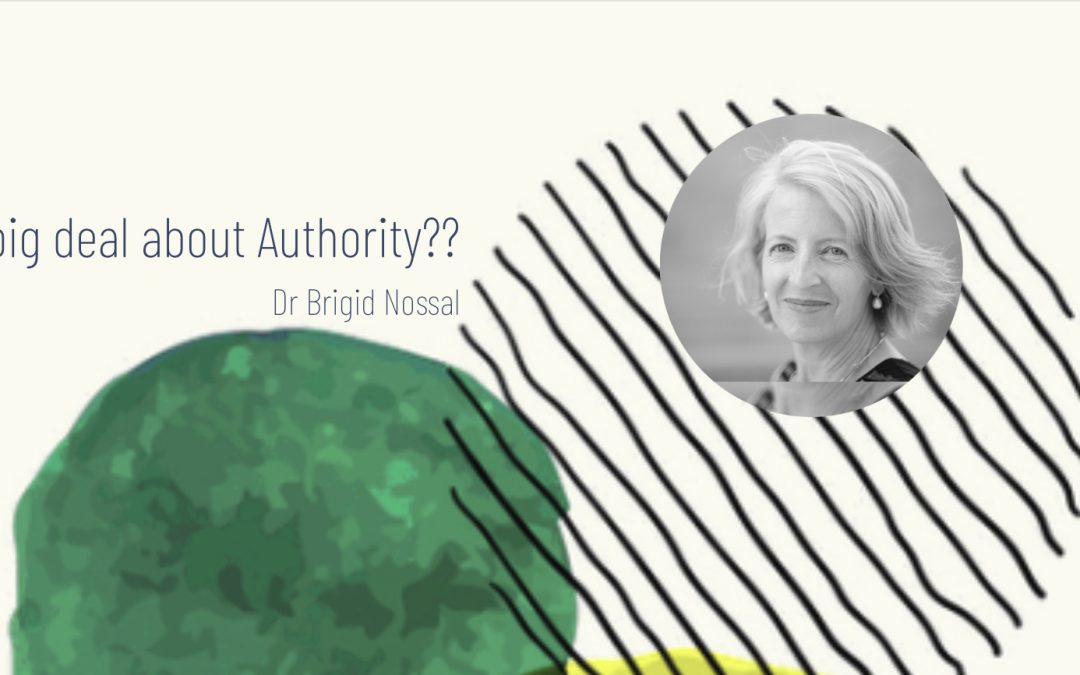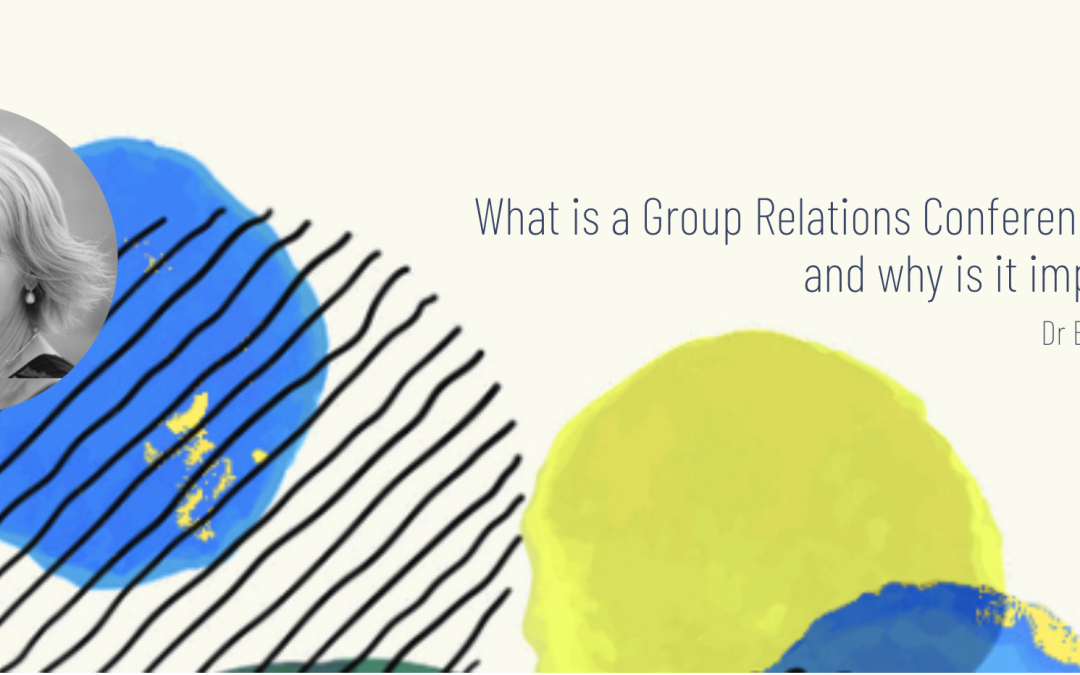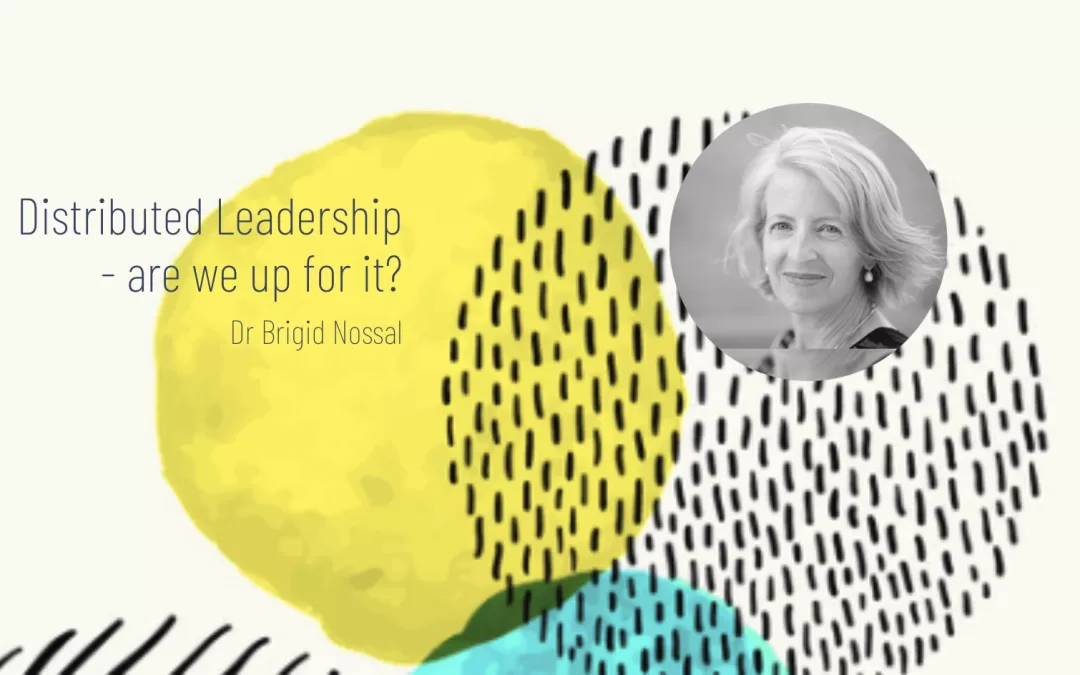
Distributed Leadership – are we up for it?
Distributed Leadership
– are we up for it?
Dr Brigid Nossal

Distributed Leadership – are we up for it, and do we really know what is meant when it’s suggested?
This is the fourth in a series of blogs about the title of NIODA’s forthcoming Group Relations Conference (GRC), ‘Authority, Role and Distributed Leadership in the Hybrid Workplace: the challenge of transforming experience’ 30 Oct – 3 Nov 2023, on-site in Melbourne, Australia, and live interactive online… In this blog we consider distributed leadership.
What do you think of when the term ‘distributed leadership’ is raised?
For at least the last fifteen years, client CEOs have approached me to support them and their staff (starting with the Executive Group) to transition to a more ‘distributed model of leadership’. Typically, what is meant by this are ways of working that are more inclusive and democratic in terms of how decisions are made, strategy is developed and innovation or change is led. This is by contrast with current or previous ways of working that are experienced as more hierarchical and autocratic. My sense is that there are taken-for-granted assumptions that a) distributed leadership is a good thing and b) we all know what it is and how to do it.
The concept of distributed leadership emerged in management and leadership discourses around the early 2000s. It marked a shift away from a preoccupation with identifying the desirable ‘leadership’ attributes of individuals to the recognition that, in practice, leadership is a distributed, co-created and collective process. In the achievement of any organisational task, leadership moves from one part of an interconnected system to another. It can occur anywhere in the chain of exchanges between people in the course of work and it can shift from one person to another and back again. When we speak of organisations shifting to more distributed leadership, we are really talking about changing our perspective on the true nature of leadership and less about a Board, CEO, or Executive Group’s desire for a ‘thing’ to be achieved and transitioned to.
While the language of distributed leadership may have only been a buzzword in organisations for the past 20 years or so, the philosophy and ethos are also embedded in ideas that go back much further. For me, steeped in Western thinking, my mind goes to thinkers like John Stuart Mill, Karl Marx, Emily Pankhurst, Paolo Friere, Mary Parker-Follett and so many more. Their thinking is imbued with the ideals of freedom, egalitarianism, democracy and social justice. Going back millennia, respect for the unique contribution, interconnectedness and interdependence of all beings have been core principles for First Nations’ communities for the longest time. We may wonder why then, for many people and organisations, a shift to distributed leadership presents such a difficult challenge.
Without going deeply into the whys and wherefores, it seems that in the iterative shifts away from tribal community life (think monarchy, church, imperialism, patriarchy, feudalism, industrialisation, capitalism, individualism, etc.), we have been schooled into paradigms of master-slave, generals and soldiers, winners and losers, rich and poor, bosses and workers, dominance and dependency, us and them. No doubt there have always been counter-streams of thinking, reflected in the work of some of those named above, but surely, the residues of so many centuries of hierarchical ways of thinking about leading and organising are deeply embedded in our psyches, if not our very DNA.
It has only been since the 1940s in Western management theory and practice, that there has been a slow, collective movement back towards more democratic ways of thinking about and being an organisation. This is less than a century as against millennia of patriarchy and hierarchy; little wonder then that the desired shift to more distributed models of leadership seems hard. As alluded to above, the fundamental change that needs to take place is as much a perceptual one as it is structural. For, although people in organisations may have been enacting real leadership all the time, as they go about their work, the shared dominant and deeply embedded paradigm of hierarchy means that neither the individual nor the system would allow them to recognise it as such.
This presents the organisation that has an express desire to embrace distributed leadership with a complex challenge. It is not only the organisational chart that may need to change. More importantly, it is the ways in which we think and how we make sense of what we do that will need to change. In a traditional hierarchical mindset, so many small acts of leadership go unrecognised as such. Consequentially, the felt sense of authority and importance that might flow from correctly recognising and naming these everyday acts of leadership is also missing. What is required is nothing less than a paradigm shift – how do we each come to think of ourselves as leaders and also recognise others as leaders when our internal architecture may not allow for it? How do we completely rewire our internal operating system without switching it off?
In addition to these internal and external rewiring and redesign challenges, there is also the question of possible unintended consequences. Often, distributed leadership seems to be regarded as synonymous with non-hierarchical or flat organisational structures. Indeed it may be the case that shifting to a flatter or networked structure may be a better fit with distributed leadership, but in this evolutionary shift, we also need to consider what additional functions hierarchy may have been serving over millennia. In my field of work, as one example, hierarchy can be seen to play an important role in protecting against some of our primitive destructive tendencies to envy and rivalrous ‘sibling’ competition amongst peers. There is something quasi-parental in the role of more senior manager that seems to mitigate against these things being acted out when the ‘boss’ can take up the role of ‘container’ into which these projections can be directed. There is also the way that hierarchy allows for differences in appetites and ambitions, skills and interests, responsibilities and accountabilities that may be useful to preserve. This raises the question of whether distributed leadership can co-exist with hierarchy.
The intention behind the design of this GRC as a hierarchical organisation is precisely so this question can be explored, along with the many other questions inevitably raised by the ideas in this blog post and the thoughts and ideas that staff and members will bring.
I hope that you will join us in this ambitious endeavour. Scroll to find more information and the other blogs.
Dr Brigid Nossal
September 2023
Distributed leadership – are we up for it?
ps NIODA’s Group Relations Conference is 30 October – 3 November 2023. This is a hybrid event both onsite in Melbourne and live interactive online. Click HERE for details.
What is a Group Relations Conference (GRC) and why is it important?
What is the big deal
about Authority?
Why is the idea of 'Role' important?
Distributed leadership - are we up for it?
Distributed leadership – are we up for it?

Dr Brigid Nossal
NIODA Group Relations Conference Director
Brigid is a co-founder and Director at NIODA. She combines academic teaching, research and supervision with consulting to organisations. For the past 20 years, systems psychodynamics and Group Relations Conferences have been central to her work. She has worked on many GRCs in Australia, the UK, China and India. Brigid directed the 2017 NIODA GRC on the theme, Leadership, Authority and Organisation: exploring creative disruption. Brigid is also a member of GRA and ISPSO.
About NIODA
The National Institute of Organisation Dynamics Australia (NIODA) offers internationally renowned post-graduate education and research in organisation dynamics, and decades of experience consulting with Australian organisations.
The study of organisation dynamics brings together socio-technical and psychoanalytic disciplines to explore the unconscious dynamics that exist in every group, team or organisation. Learning more about these theories, and reflecting on the experience of them, can support leaders and managers to unlock great potential in their organisations, tackling issues through a whole new light.
PO Box 287, Collins Street West,
Wurundjeri Melbourne 8007 Australia
+61 (0) 414 529 867
info@nioda.org.au
NIODA acknowledges the Kulin Nations, and respective Traditional Custodians of the lands we work on.
We pay our respects to Elders past and present, and recognise their enduring sovereignty which has, and continues to, care for Country.
NIODA welcomes the Uluru Statement from the Heart’s invitation to walk with Aboriginal and Torres Strait Islander peoples in a collective movement for a better future.
